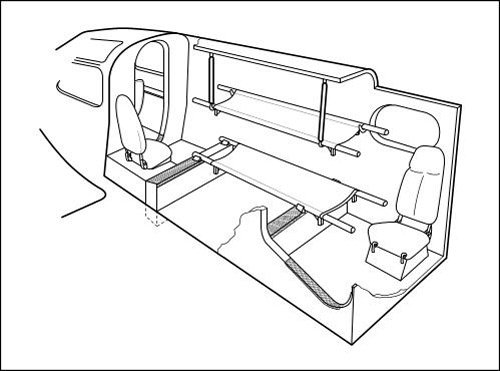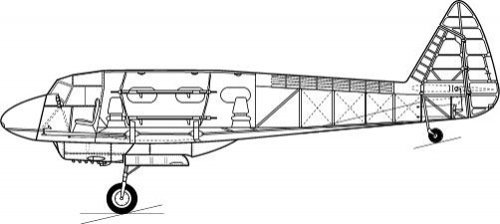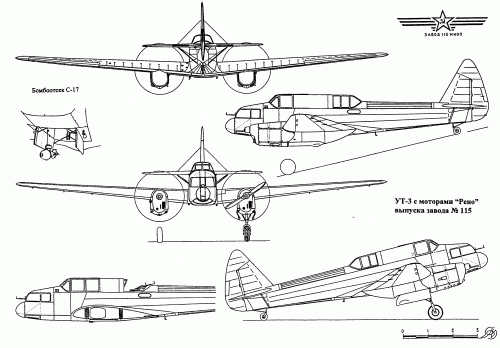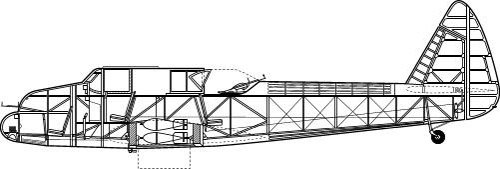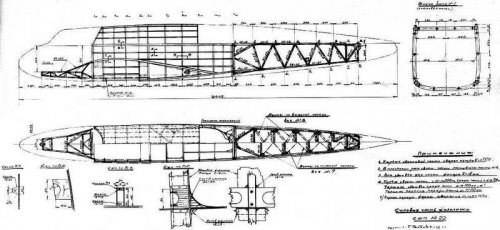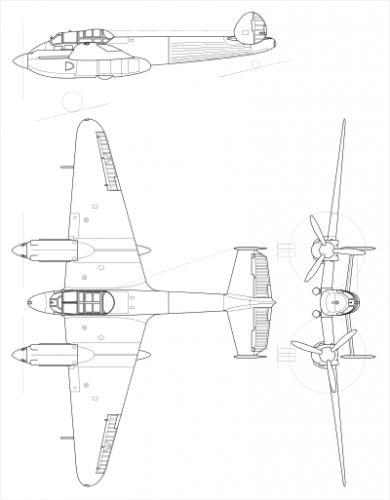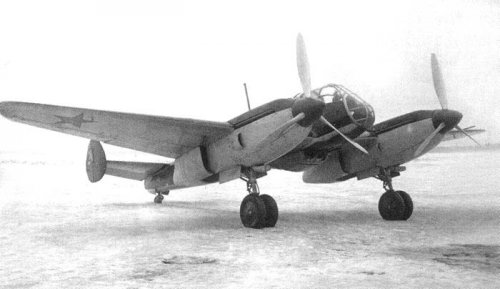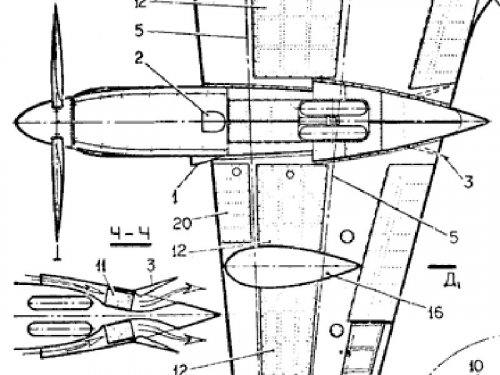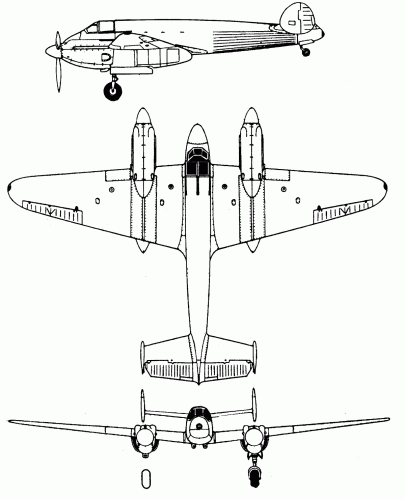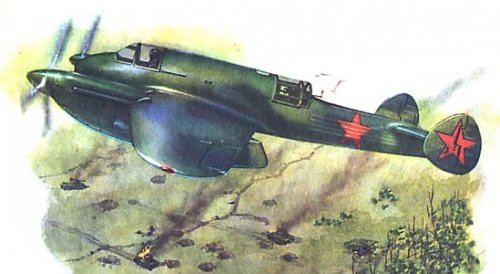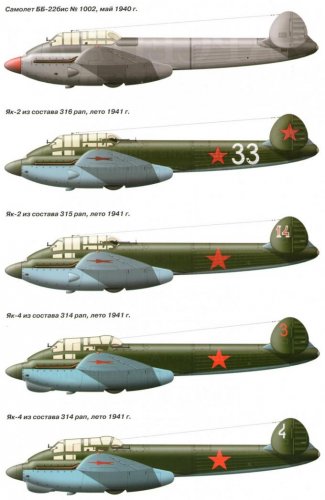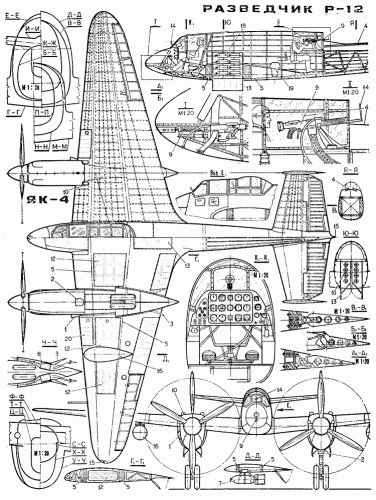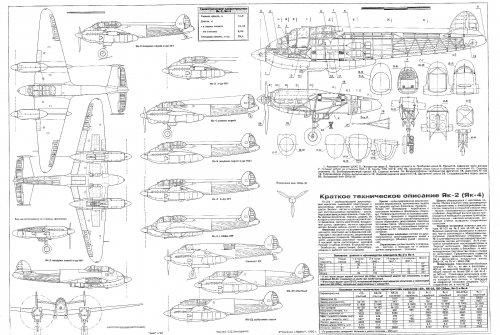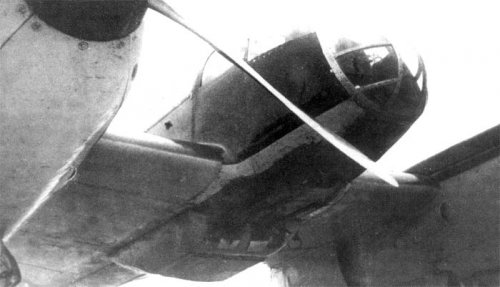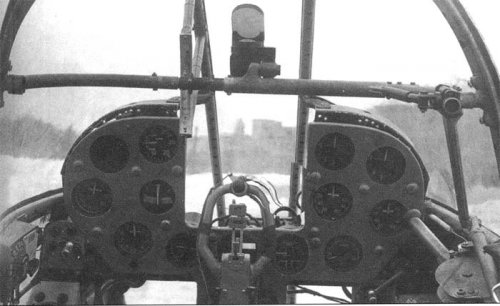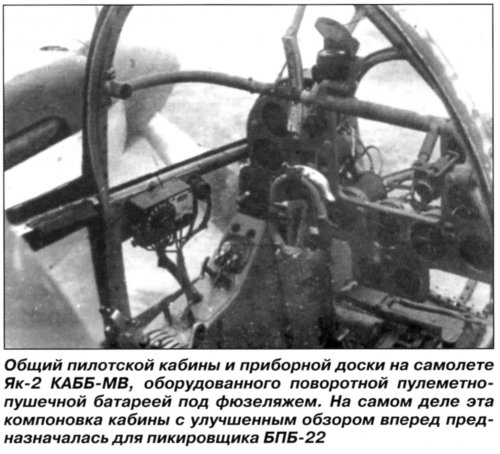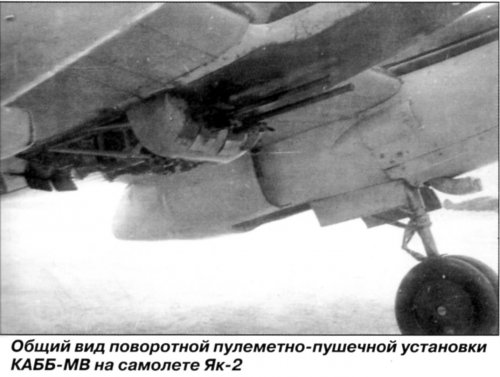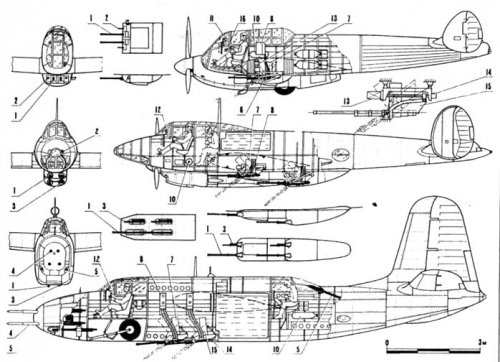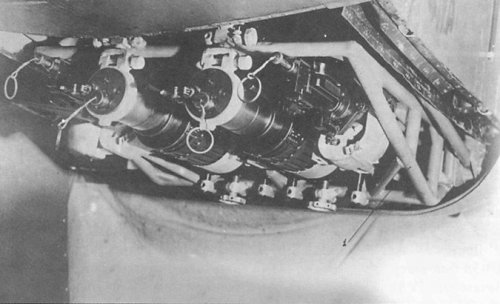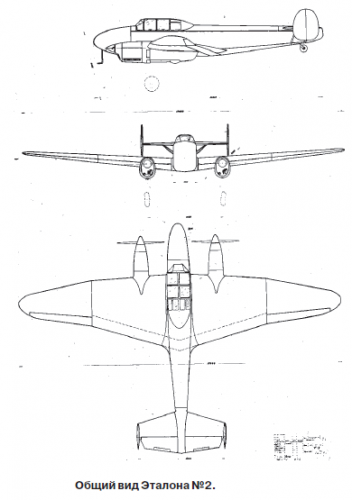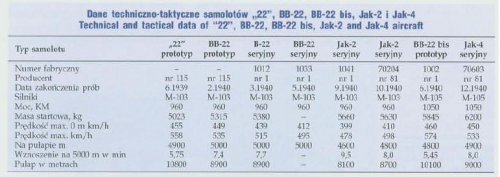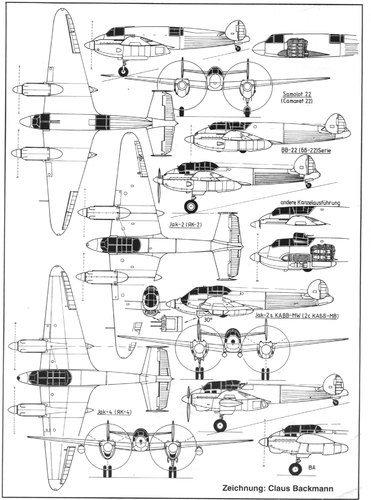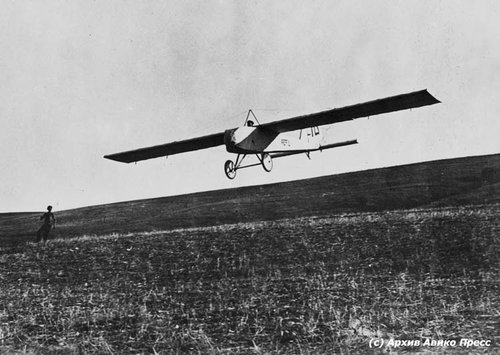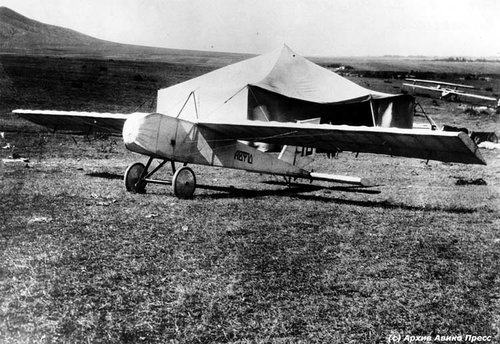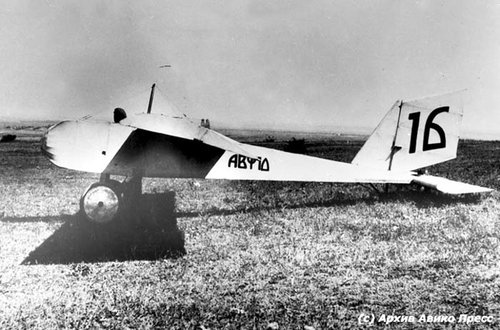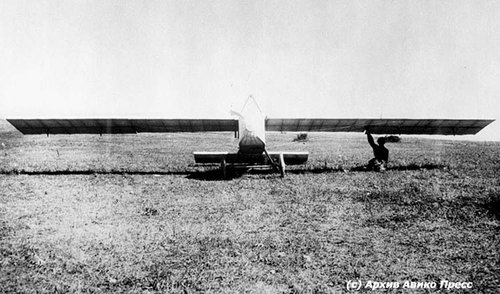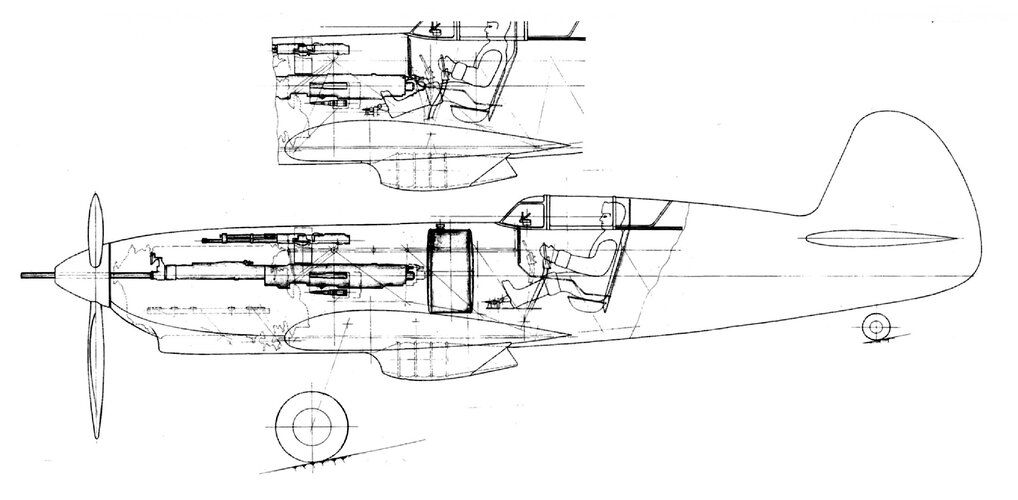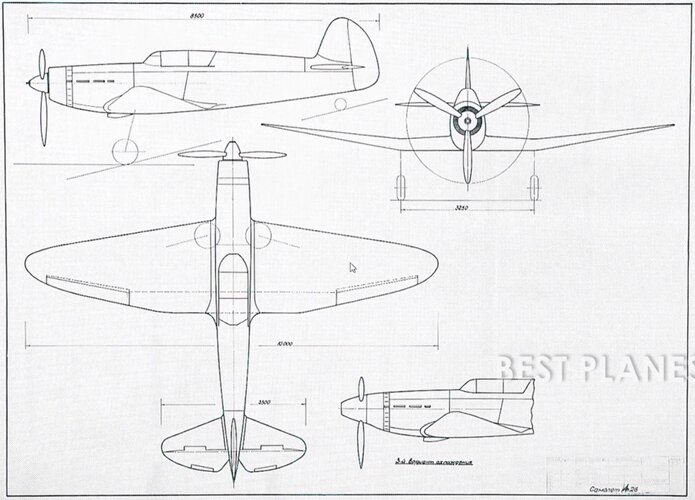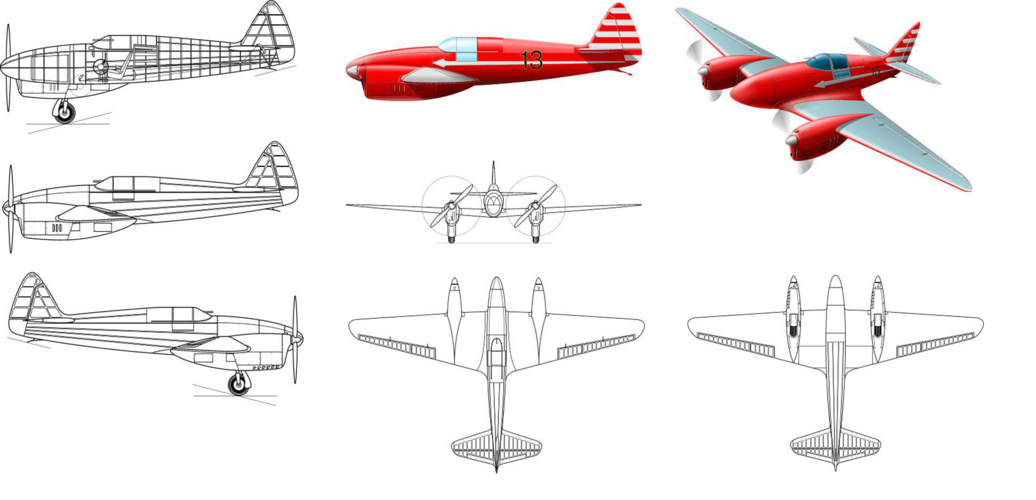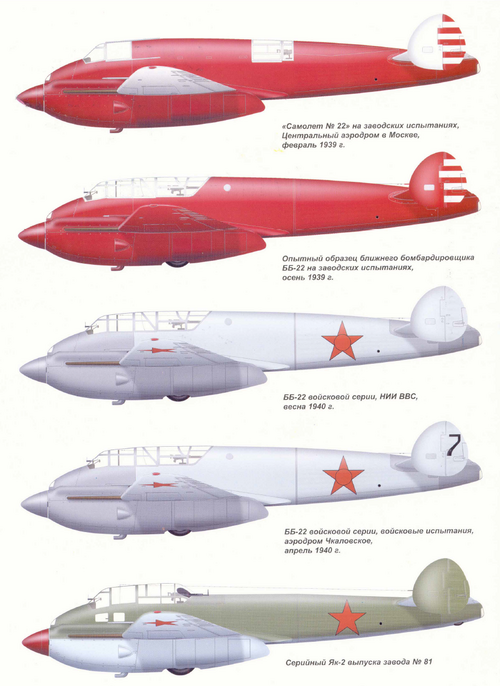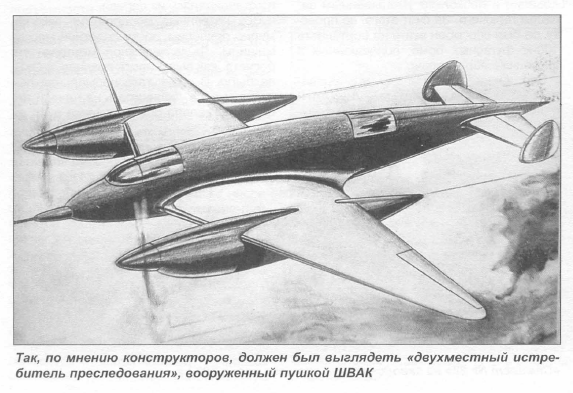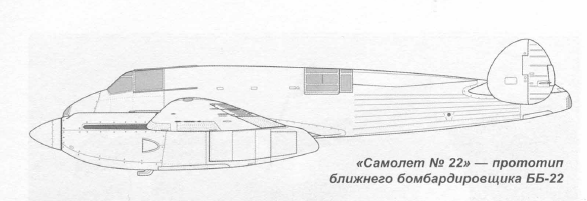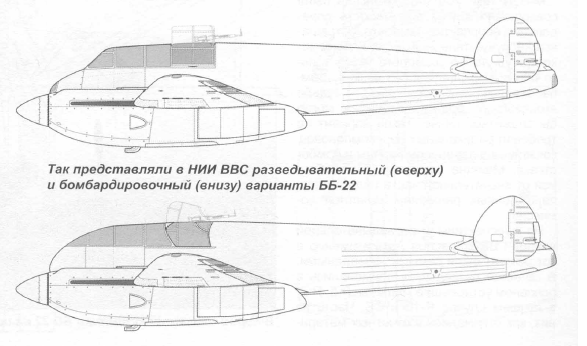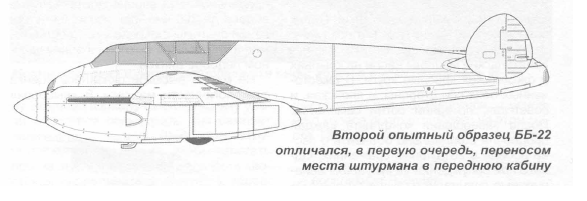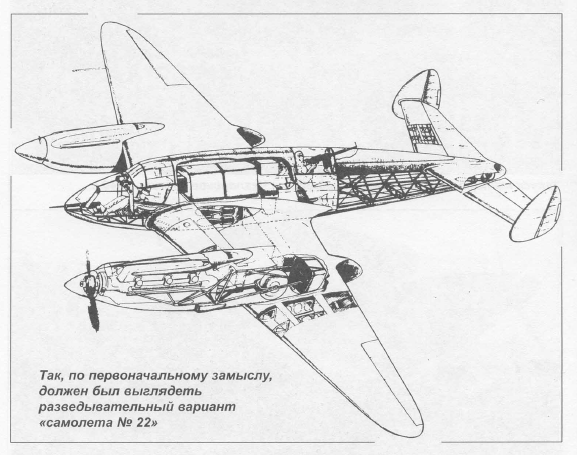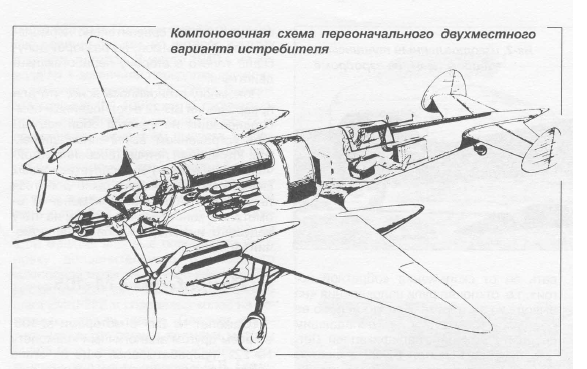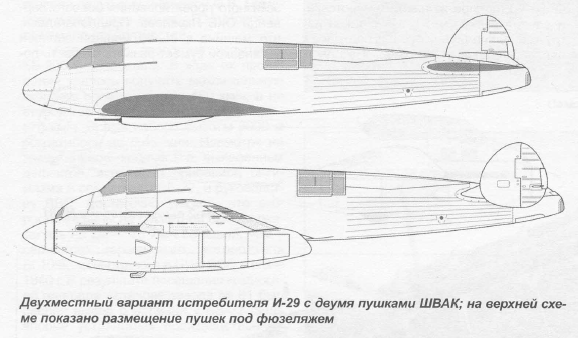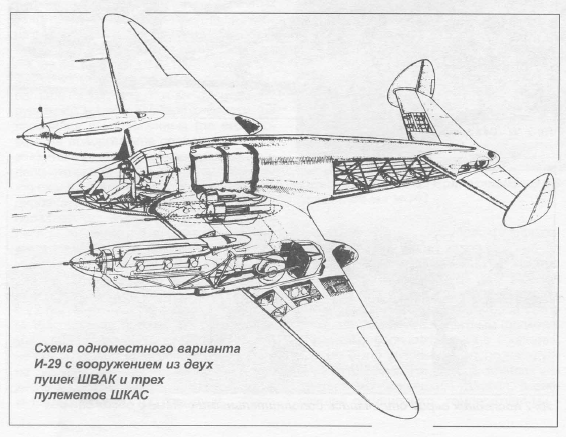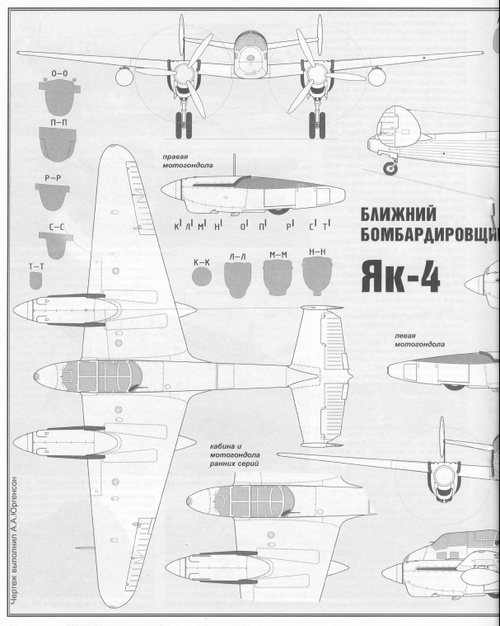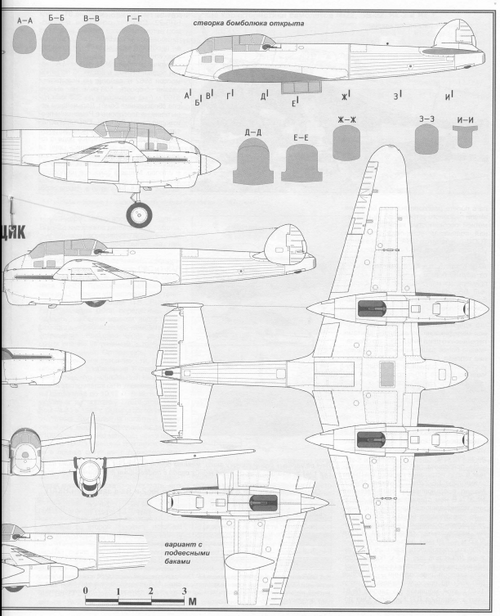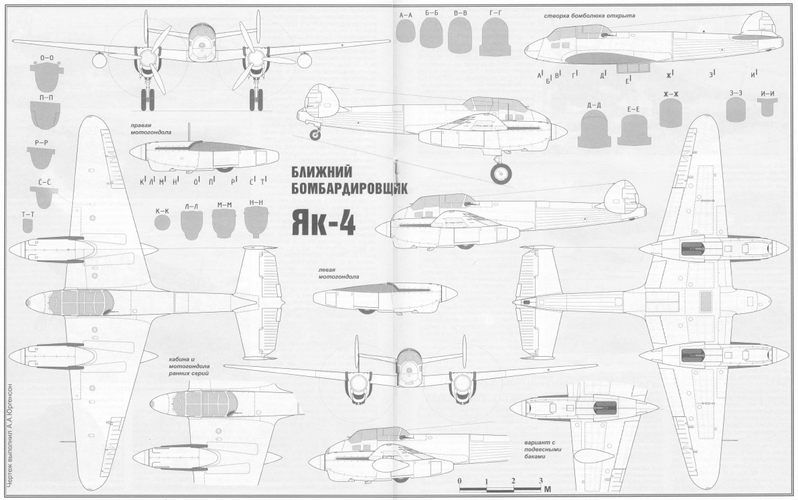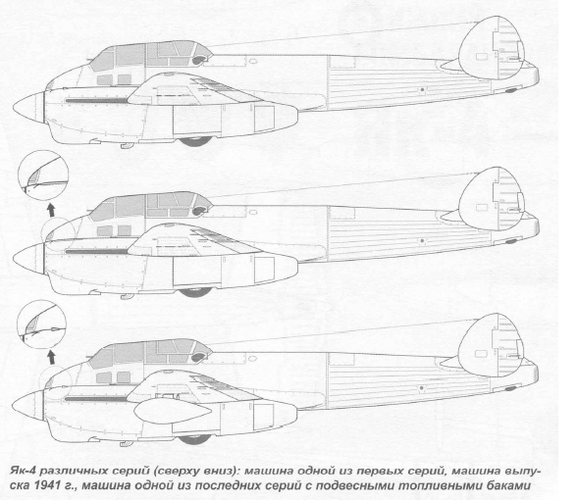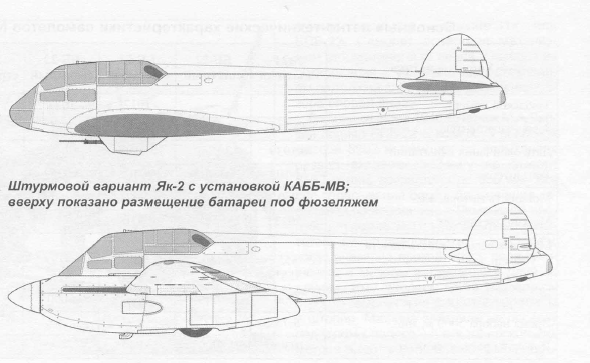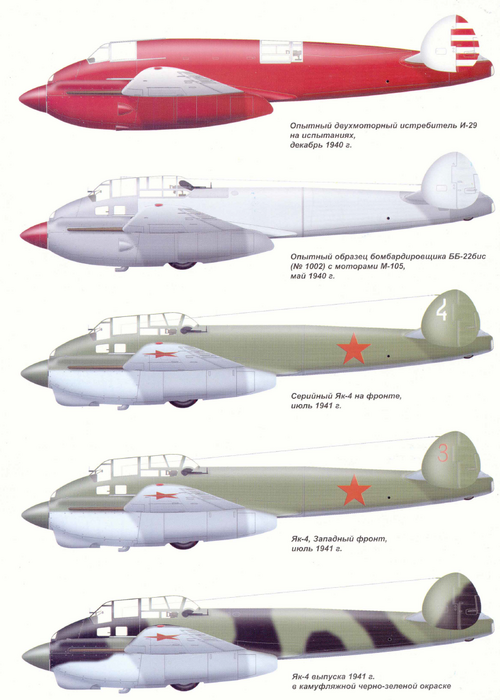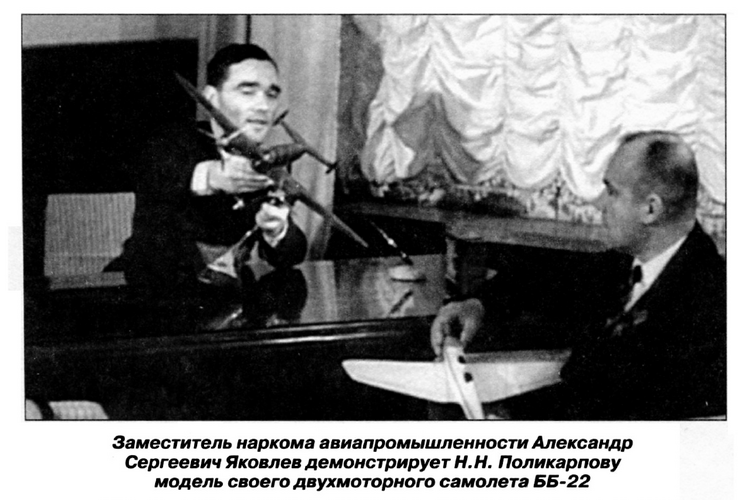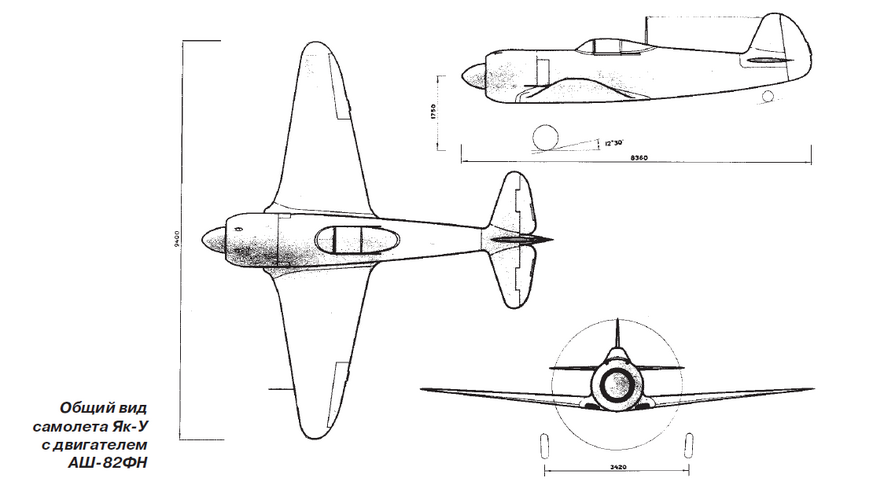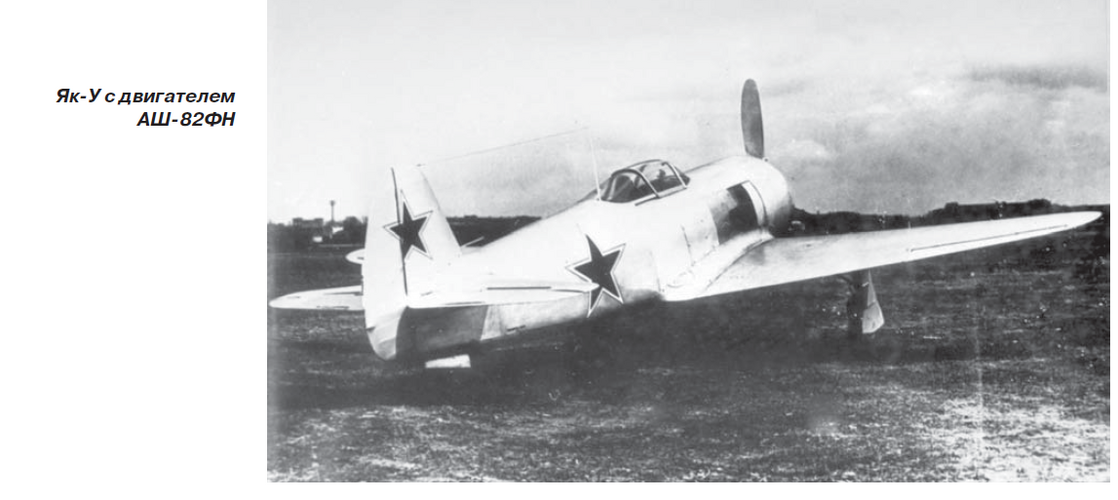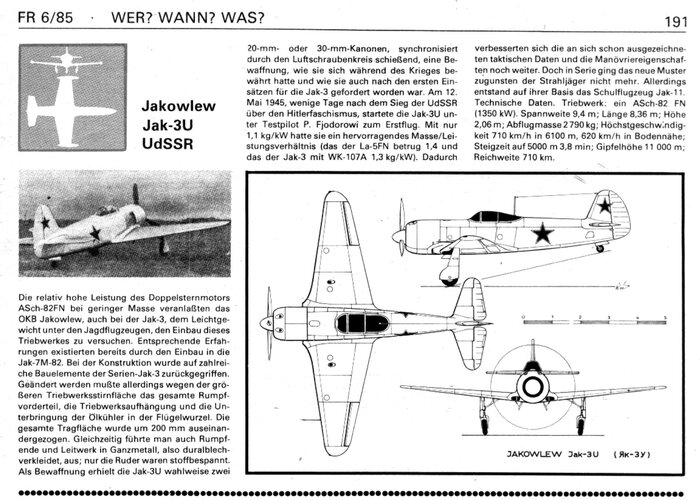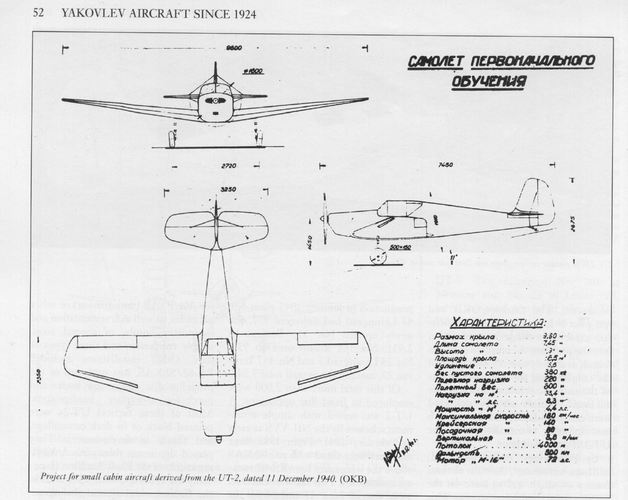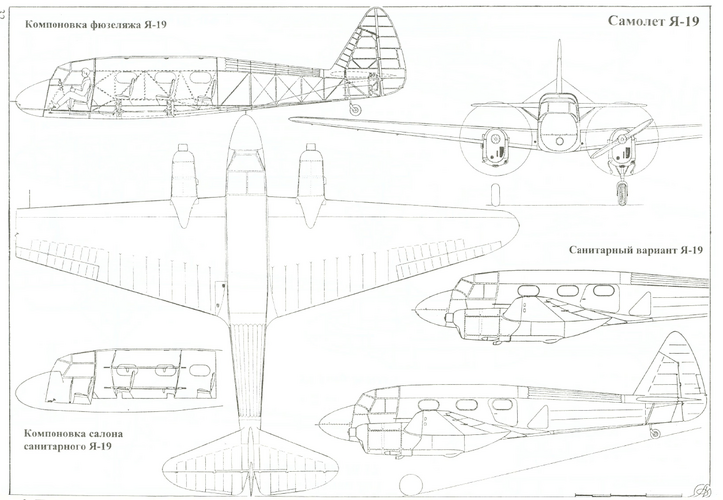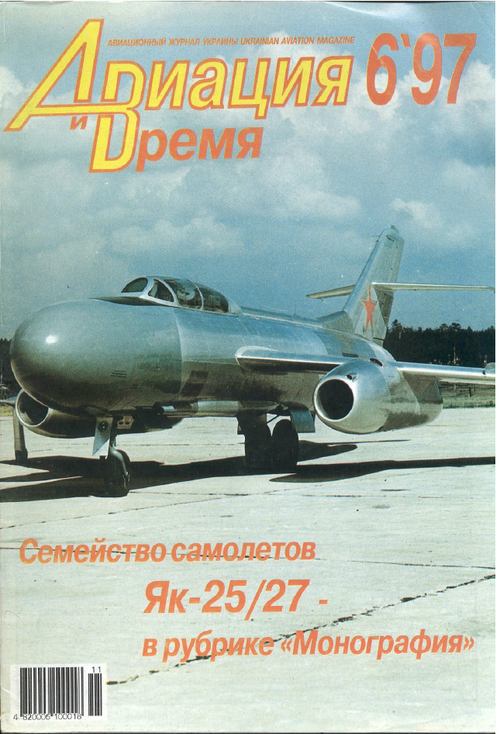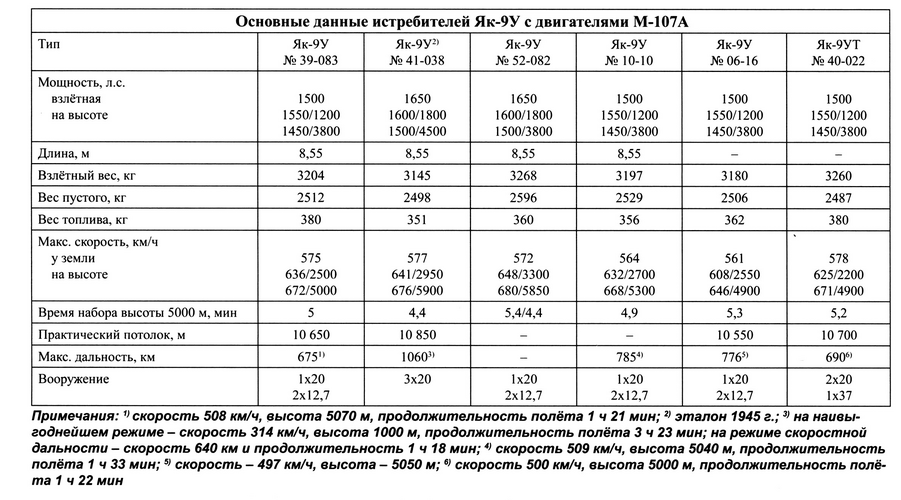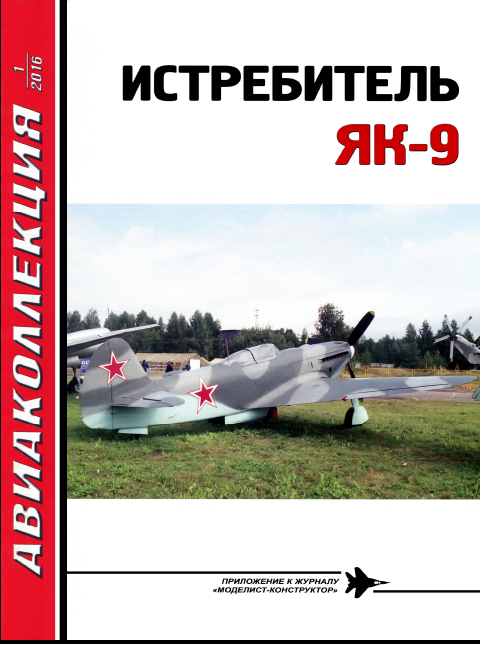You are using an out of date browser. It may not display this or other websites correctly.
You should upgrade or use an alternative browser.
You should upgrade or use an alternative browser.
Yakovlev Projects and Prototypes
- Thread starter Maveric
- Start date
- Joined
- 25 June 2009
- Messages
- 14,301
- Reaction score
- 4,755
hesham said:the Ya.19 had an ambulance version project,but was not built.
Ya-19 ambulance project:
Attachments
- Joined
- 25 June 2009
- Messages
- 14,301
- Reaction score
- 4,755
hesham said:the Yak UTPB was a Project derivative from UT-3,a dive bomber/trainer aircraft of 1940.
I think this could the UTPB:
Attachments
- Joined
- 25 June 2009
- Messages
- 14,301
- Reaction score
- 4,755
hesham said:Thank you my dear Skyblazer,
please,can you give me the source,and thanks.
First image from a Russian magazine, but which one, I can't remember.
Second image saved from the Avico Press site a few years ago as part of a comprehensive (but legal) search for all pictures on their site, which I then downloaded. Since I couldn't speak Russian and was not as organized then as I am now, I guess, I didn't note the caption for many images, rendering them pretty useless... (hence the reason I rarely share anything from that collection).
- Joined
- 26 May 2006
- Messages
- 34,079
- Reaction score
- 14,600
mechan said:26: 1940, I-26, from 09.11.1940 state designation Yak-1
27: 1940, UTI-26, from 09.11.1940 state designation Yak-7
28: 1940, I-28, I-26W, I-26N, from 09.11.1940 state designation Yak-5 (first use of this designation)
29: 1941, I-29, BB-29IS, prototype based on the bomber BB-22 as (escort) fighter
30: 1941, I-30 I-26U, from 09.11.1940 state designation Yak-3 (first use of this designation)
31: 1940, BPB-22, BB-22PB, prototype based on the bomber BB-22 as dive-bomber.
In this series;
33: 1943, was Yak-1 version,small batch built with 1350 hp M-106 engine and had a maximum
speed of 610 km/h
Who Know the 32 ?.
blackkite
Don't laugh, don't cry, don't even curse, but.....
- Joined
- 31 May 2007
- Messages
- 8,681
- Reaction score
- 7,190
Hi!
https://lib.rus.ec/b/597451/read
"...the lead composer OKB-115 Leon Schechter were aimed at creating another multi-purpose machine, and above all a high-speed bomber. This is the proportion of all employees of the team of common species - to look forward. A high-speed bomber was counted under the recently appeared M-103 engines. The peculiarity of this motor was a centrifugal compressor, which increased its power by almost 100 hp. At an altitude of 4000 meters, and this is a significant increase in speed.
Preliminary calculations have shown the possibility of achieving a 600-kilometer speed limit. But the plane is not a stool, and before starting to design, its design and rationale must mature, and this takes a long time. And to go to the main designer with a bare idea is worthless. It should be supported by calculations.
Install at least a month, when work began on the machine, it is not possible. However, drawings of the general form of the machine are known, apparently under the designation No. 22..."
"Since the summer of 1939, the "22" aircraft in the version of the near bomber began to be officially called the BB-22, the reconnaissance vehicle was P-12, http://www.secretprojects.co.uk/forum/index.php?action=dlattach;topic=5648.0;attach=541330;image
and the single seat fighter armed with two guns and three machine guns was the I-29. http://www.secretprojects.co.uk/forum/index.php?action=dlattach;topic=5648.0;attach=541326;image
In late 1940, the BB-22 was once again renamed into the Yak-2, and its modification with more powerful engines - in the Yak-4. "
https://lib.rus.ec/b/597451/read
"...the lead composer OKB-115 Leon Schechter were aimed at creating another multi-purpose machine, and above all a high-speed bomber. This is the proportion of all employees of the team of common species - to look forward. A high-speed bomber was counted under the recently appeared M-103 engines. The peculiarity of this motor was a centrifugal compressor, which increased its power by almost 100 hp. At an altitude of 4000 meters, and this is a significant increase in speed.
Preliminary calculations have shown the possibility of achieving a 600-kilometer speed limit. But the plane is not a stool, and before starting to design, its design and rationale must mature, and this takes a long time. And to go to the main designer with a bare idea is worthless. It should be supported by calculations.
Install at least a month, when work began on the machine, it is not possible. However, drawings of the general form of the machine are known, apparently under the designation No. 22..."
"Since the summer of 1939, the "22" aircraft in the version of the near bomber began to be officially called the BB-22, the reconnaissance vehicle was P-12, http://www.secretprojects.co.uk/forum/index.php?action=dlattach;topic=5648.0;attach=541330;image
and the single seat fighter armed with two guns and three machine guns was the I-29. http://www.secretprojects.co.uk/forum/index.php?action=dlattach;topic=5648.0;attach=541326;image
In late 1940, the BB-22 was once again renamed into the Yak-2, and its modification with more powerful engines - in the Yak-4. "
Attachments
-
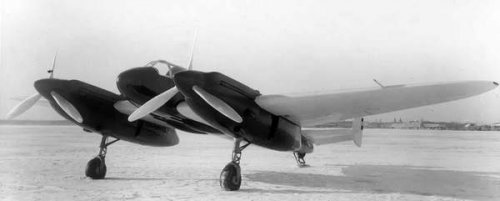 the I-29 fighter with M-103 engines.jpg12.3 KB · Views: 114
the I-29 fighter with M-103 engines.jpg12.3 KB · Views: 114 -
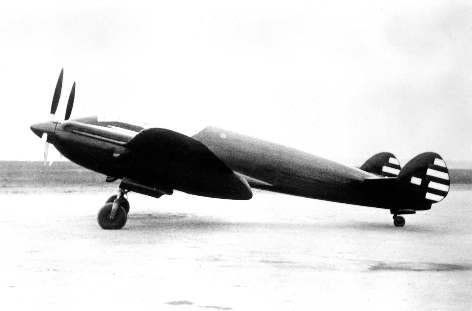 The first prototype of the BB-22..jpg11.4 KB · Views: 119
The first prototype of the BB-22..jpg11.4 KB · Views: 119 -
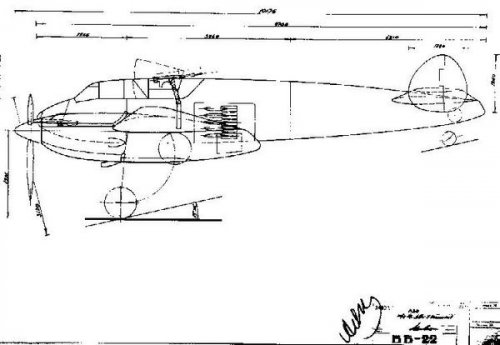 BB-22 SIDE VIEW in 1937.jpg29.7 KB · Views: 107
BB-22 SIDE VIEW in 1937.jpg29.7 KB · Views: 107 -
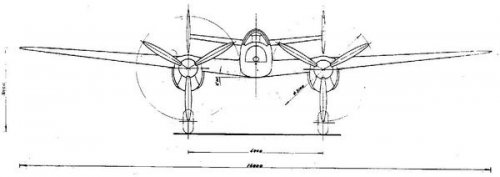 BB-22 FRONT VIEW in 1937.jpg13.6 KB · Views: 445
BB-22 FRONT VIEW in 1937.jpg13.6 KB · Views: 445 -
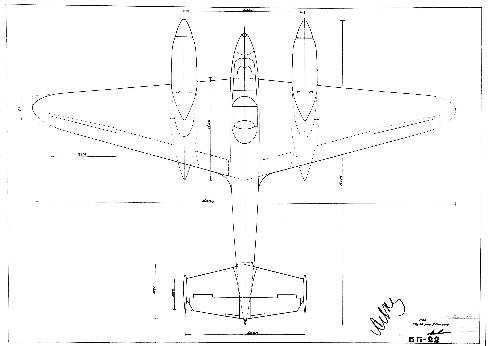 BB-22 PLAN VIEW in 1937.jpg19 KB · Views: 457
BB-22 PLAN VIEW in 1937.jpg19 KB · Views: 457 -
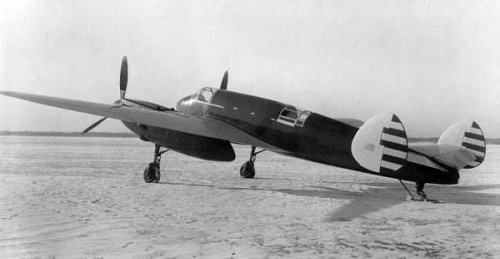 the aircraft number 22 at the factory tests. Central airfield, January - February 1939..jpg20 KB · Views: 479
the aircraft number 22 at the factory tests. Central airfield, January - February 1939..jpg20 KB · Views: 479 -
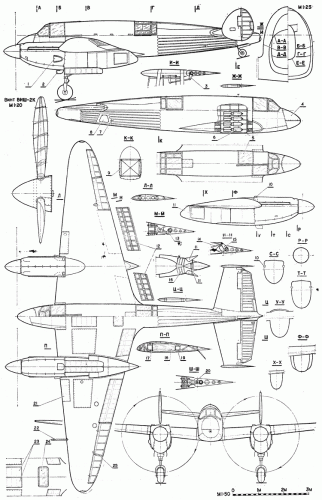 aircraft 22.gif85.9 KB · Views: 498
aircraft 22.gif85.9 KB · Views: 498 -
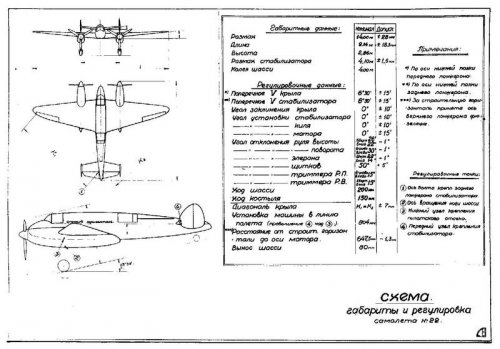 Dimension and adjustments of the aircraft number 22..jpg93.8 KB · Views: 501
Dimension and adjustments of the aircraft number 22..jpg93.8 KB · Views: 501
blackkite
Don't laugh, don't cry, don't even curse, but.....
- Joined
- 31 May 2007
- Messages
- 8,681
- Reaction score
- 7,190
Hi! More fighter design and bomber design.
Two seat Pursuit fighter.
Two-seat pursuit fighter cutaway.
The design of the bomber in 1938.
Two seat Pursuit fighter.
Two-seat pursuit fighter cutaway.
The design of the bomber in 1938.
- Joined
- 26 May 2006
- Messages
- 34,079
- Reaction score
- 14,600
blackkite said:Hi! Two seat fighter design.
I sent all those drawings before in reply # 33,no need to sending them again ?.
blackkite
Don't laugh, don't cry, don't even curse, but.....
- Joined
- 31 May 2007
- Messages
- 8,681
- Reaction score
- 7,190
"The first experimental, or rather demonstrational,the the aircraft No.22 was assembled at the end of 1938 (no later than December 25) and began to work it out on the ground. A month later, on January 1, 1939, the commission, chaired by the director and chief designer A. Yakovlev, signed the Act on the acceptance of the aircraft and its admission to factory flight tests."
"Since the plane "22" was presented as a reconnaissance aircraft, and the government primarily demanded a bomber, by the indicated date (September 10, 1939) a second prototype under the designation BB-22 was manufactured and the next day it was handed over to factory tests. The leading pilot in the car was still Julian Piontkovsky. But it was not presented for state tests, limited to factory ones. But the report with their results could not be found, only the flight data of the machine are known. In particular, its maximum speed compared to the first C-22 decreased by 22 km / h."
"On the other hand, the P-12 with engines M-105 December 11, 1939 passed the state tests. Thus it showed a speed of 590 km / h at a height of 5000 meters and a distance of 1000 km. Aircraft armament consisted of two guns and bombs 120 kg."
"The main bomber of the military series (No. 1001) with the M-103 engines at the plant No. 1 was built on December 31, 1939, and until February 20, 1940, when it overcame the earth's gravity, they worked on its development. In this form, the first seven vehicles of the military series with the machine gun installation SU BB-22 GI Gudimenko were manufactured, which provided for the raising of the lantern above the cockpit of the navigator and the turret with the help of a pneumatic drive of the arc. Three other machines for comparison with them were equipped with Frolov and MV-3 installations, as well as with a turret from the two-seat fighter DI-6, due to which it was necessary to drop the garage. "
"The construction of the BB-22IS (I-29) with the M-105 engines was started in accordance with the resolution of the Defense Committee No. 429ss of November 5, 1940, taking into account the requirement of the Defense Committee of the USSR of October 2, 1940 on increasing the range of the flight of twin-engine fighter jets Tracking up to 2000 km at a speed corresponding to 0.8 from its maximum value. Apparently, this circumstance forced OKB-115 to change the fuel system of the aircraft, increasing the fuel reserve, with the only reserve for this was the cargo bay, which delayed its construction. "
"The strength and critical speed data are identical with the Yak-4, which was tested earlier, why the instructions for carrying out the flight tests of a single-seat fighter remain the same as for BB-22 with 2M-105. "
This suggests that the first flight of the I-29 took place in September 1941, and on October 29, OKB-115 was evacuated to Novosibirsk, which could not but affect the timing of the I-29 and its fate.Work on the aircraft continued for over a year and stopped only in 1942, when the production of the Pe-3bis fighter was set up. "
"Since the plane "22" was presented as a reconnaissance aircraft, and the government primarily demanded a bomber, by the indicated date (September 10, 1939) a second prototype under the designation BB-22 was manufactured and the next day it was handed over to factory tests. The leading pilot in the car was still Julian Piontkovsky. But it was not presented for state tests, limited to factory ones. But the report with their results could not be found, only the flight data of the machine are known. In particular, its maximum speed compared to the first C-22 decreased by 22 km / h."
"On the other hand, the P-12 with engines M-105 December 11, 1939 passed the state tests. Thus it showed a speed of 590 km / h at a height of 5000 meters and a distance of 1000 km. Aircraft armament consisted of two guns and bombs 120 kg."
"The main bomber of the military series (No. 1001) with the M-103 engines at the plant No. 1 was built on December 31, 1939, and until February 20, 1940, when it overcame the earth's gravity, they worked on its development. In this form, the first seven vehicles of the military series with the machine gun installation SU BB-22 GI Gudimenko were manufactured, which provided for the raising of the lantern above the cockpit of the navigator and the turret with the help of a pneumatic drive of the arc. Three other machines for comparison with them were equipped with Frolov and MV-3 installations, as well as with a turret from the two-seat fighter DI-6, due to which it was necessary to drop the garage. "
"The construction of the BB-22IS (I-29) with the M-105 engines was started in accordance with the resolution of the Defense Committee No. 429ss of November 5, 1940, taking into account the requirement of the Defense Committee of the USSR of October 2, 1940 on increasing the range of the flight of twin-engine fighter jets Tracking up to 2000 km at a speed corresponding to 0.8 from its maximum value. Apparently, this circumstance forced OKB-115 to change the fuel system of the aircraft, increasing the fuel reserve, with the only reserve for this was the cargo bay, which delayed its construction. "
"The strength and critical speed data are identical with the Yak-4, which was tested earlier, why the instructions for carrying out the flight tests of a single-seat fighter remain the same as for BB-22 with 2M-105. "
This suggests that the first flight of the I-29 took place in September 1941, and on October 29, OKB-115 was evacuated to Novosibirsk, which could not but affect the timing of the I-29 and its fate.Work on the aircraft continued for over a year and stopped only in 1942, when the production of the Pe-3bis fighter was set up. "
Attachments
blackkite
Don't laugh, don't cry, don't even curse, but.....
- Joined
- 31 May 2007
- Messages
- 8,681
- Reaction score
- 7,190
Yakovlev Design Bureau –:– company –:– history –:– aircraft –:– BB-22
BB-22 WWII Fighters, Yakovlev Design Bureau
www.yak.ru
Yakovlev first combat aircraft. High speed bomber with two М-103 960 hp engines ( Yak-2 ). Used in the beginning of WWII as reconnaissance aircraft and light bomber.
After installation of М-105 1100 hp engines was designated as Yak-4.
200 aircraft was produced and participated in combat operations."
Yak-2

Yakovlev Yak-2 - Wikipedia
Yak-4.(BB-22 bis)
Yakovlev Yak-4 - Wikipedia
Attachments
blackkite
Don't laugh, don't cry, don't even curse, but.....
- Joined
- 31 May 2007
- Messages
- 8,681
- Reaction score
- 7,190
Hi!

 warfiles.ru
warfiles.ru
I-29 fighter.
Radiator arrangement of this series aircraft is interesting.
Боевой самолет Як-4. СССР - Альтернативная История
Боевой самолет Як-4. СССР - Альтернативная История
I-29 fighter.
Radiator arrangement of this series aircraft is interesting.
Attachments
The Yak-2KABB shown above had an interesting armament installation. Two 20-mm ShVAK cannon and two 7.62-mm ShKAS machine guns were mounted on a faired ventral frame with trunnions attached to the aircraft. This semi-flexible gun mount was controlled by a special sight mounted in a new, glazed forward fuselage. By keeping the sight on the target, the pilot could keep the target under continuous fire during a level bombing run. The pictures are from my archive, sources now forgotten.
Attachments
blackkite
Don't laugh, don't cry, don't even curse, but.....
- Joined
- 31 May 2007
- Messages
- 8,681
- Reaction score
- 7,190
Hi!

 en.wikipedia.org
en.wikipedia.org
"Yefim Gordon does mention a Yak-2KABB ground-attack variant which might have been confused with the I-29 because it had two ShKAS in the nose and two 20 mm (0.79 in) ShVAK cannon in a depressible ventral pack. Unfortunately no other details are available, although photos do exist."

 xn--80aafy5bs.xn--p1ai
"Armament: 2 x 20-mm cannons ShVAK and 2 x 7.62-mm machine gun ShKAS (load 300 shells for cannons and 1000 cartridges for machine-guns"
xn--80aafy5bs.xn--p1ai
"Armament: 2 x 20-mm cannons ShVAK and 2 x 7.62-mm machine gun ShKAS (load 300 shells for cannons and 1000 cartridges for machine-guns"
 military.wikireading.ru
military.wikireading.ru
"1-20 mm cannon Lubak; 2-7.62-mm machine gun shkas; 6-Mobile frame-carriage; 7-a gun cartridge; 8-a machine-gun chest 10-air recharge container; 11-Collimator of CT-8 13-Motor with gearbox; 16-Remote JESBR-6"

Yakovlev Yak-2 - Wikipedia
"Yefim Gordon does mention a Yak-2KABB ground-attack variant which might have been confused with the I-29 because it had two ShKAS in the nose and two 20 mm (0.79 in) ShVAK cannon in a depressible ventral pack. Unfortunately no other details are available, although photos do exist."

Штурмовик Як-2 КАББ.
Штурмовик Як-2 КАББ. :: Штурмовик Як-2 КАББ. Разработчик: ОКБ Яковлева Страна: СССР Первый полет: 1941 г. В марте-апреле 1941 года в НИИ ВВС КА проходил государственные испытания
Подвижные пушки Можаровского и Веневидова в Великой Отечественной войне. АвиО’6
"1-20 mm cannon Lubak; 2-7.62-mm machine gun shkas; 6-Mobile frame-carriage; 7-a gun cartridge; 8-a machine-gun chest 10-air recharge container; 11-Collimator of CT-8 13-Motor with gearbox; 16-Remote JESBR-6"
Attachments
- Joined
- 31 July 2013
- Messages
- 562
- Reaction score
- 1,155
Stenda G
ACCESS: Restricted
- Joined
- 17 December 2018
- Messages
- 28
- Reaction score
- 69
First one - early proposal of Yak-7-37 with 37mm autocanon Sh-37 with pilot cockpit on second position and ~200L fuel tank in fuselage. (from S.Kuznecov`s book)
Second - I-26 with frontal radiator and tunnel spinner (S.Kuznecov`s lection about Yak-1 on YT)
And third - AIR-13 all images, that i found.
Second - I-26 with frontal radiator and tunnel spinner (S.Kuznecov`s lection about Yak-1 on YT)
And third - AIR-13 all images, that i found.
Attachments
- Joined
- 26 May 2006
- Messages
- 34,079
- Reaction score
- 14,600
From, Aviakollektsiya_2007-3.
Attachments
- Joined
- 26 May 2006
- Messages
- 34,079
- Reaction score
- 14,600
- Joined
- 31 July 2013
- Messages
- 562
- Reaction score
- 1,155
I was thinking about this and I have managed to mock up what the Air-5 would have looked like with the unbuilt M-48 engine, which was a seven cylinder variant of the M-11. To create the engine I used an M-11 from a Po-2 as a basis and then created a seven cylinder engine, using a AS Lynx to show me the locations of the seven cylinders. I must emphasise that this is purely speculative as far as the Air-10 unbuilt variant is concerned. Also they may have been other changes to the airframe from the original Air-5 layout.Hi,
has anyone a drawing to Yakovlev Air-10 (first allocated) to a high-wing light transport
aircraft project,improved version from Air-5,and powered by one 220 hp M-48 engine ?.
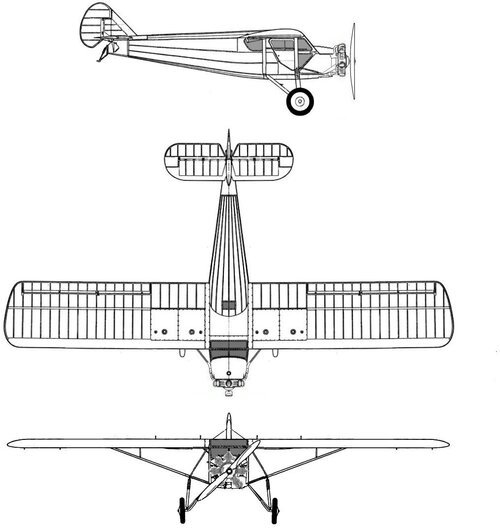
- Joined
- 31 July 2013
- Messages
- 562
- Reaction score
- 1,155
Hi Hesham there is a drawing of this in Putnam's Yakovlev Aircraft volume on page 52, but I am currently unable to scan anything.Hi,
in 1940,Yakovlev worked on a project of two seat (side-by-side) trainer,low-wing monoplane
powered by one 72 hp M-16 engine,has anyone a drawing for it ?.
- Joined
- 26 May 2006
- Messages
- 34,079
- Reaction score
- 14,600
Hi Hesham there is a drawing of this in Putnam's Yakovlev Aircraft volume on page 52, but I am currently unable to scan anything.Hi,
in 1940,Yakovlev worked on a project of two seat (side-by-side) trainer,low-wing monoplane
powered by one 72 hp M-16 engine,has anyone a drawing for it ?.
OK my dear Victor.
Attachments
- Joined
- 8 March 2009
- Messages
- 1,040
- Reaction score
- 1,214
Yak-1 conversion with boundary layer control;
"Almost simultaneously, at the end of 1941, the head of the design bureau of the TsAGI branch in Novosibirsk, senior engineer A.A. Ivanov, created a preliminary design of the Yak-1 UPS airplane. Unlike the DB-3 UPS, where the supercharger serving the system-team, driven by an additional automobile engine ZIS-101A, the Yak-1 aircraft was supposed to draw air from the regular supercharger motor M-105. In this case, the engine carburetors were switched to supply air directly from the atmosphere through holes in the engine cowl. The wing was subjected to major modifications under the project. Its tips became trapezoidal shape. Instead of the traditional landing flaps were installed elongated two-section metal flaps with a slit suction boundary layer on top of the entire span and the exit slit with a regulating flap below
flap. Reduced ailerons, due to changes in the shape of the wing tips shifted to the wing tips, in connection with their effectiveness should remain unchanged. In the fuselage, wing and flap mounted a system of air-draining and diverting channels. The wing was equipped with an automatic prekriikom, made because of its small thickness of wood with dural plating. It was also supposed to change the range of angles of deflection of the blades of the propeller VISH-b1 P in the direction of reduction, to achieve zero thrust. A special device was developed to quickly transfer the propeller blades to the takeoff position when leaving for the second round. According to calculations, the landing speed of the Yak-1 airplane should have decreased from 141 to 124 km/h. It was planned to conduct in-flight studies in 1942, but with the transfer to Moscow of the responsible executor of the project P.P. Krasilshchikov and leading engineer A.A. Ivanov, it was decided to limit only theoretical study of the preliminary design. On the other hand, due to major wing modifications, it was practically impossible to implement the Yak-1 UPS project (and together with it a similar project for the MiG-3) in serial production in the early period of the war. Field research on this topic, as a promising direction, was continued in 1942-1943 on the DB-3 UPS aircraft. "

From; "Yak-1; Our best fighter of 1941"
"Almost simultaneously, at the end of 1941, the head of the design bureau of the TsAGI branch in Novosibirsk, senior engineer A.A. Ivanov, created a preliminary design of the Yak-1 UPS airplane. Unlike the DB-3 UPS, where the supercharger serving the system-team, driven by an additional automobile engine ZIS-101A, the Yak-1 aircraft was supposed to draw air from the regular supercharger motor M-105. In this case, the engine carburetors were switched to supply air directly from the atmosphere through holes in the engine cowl. The wing was subjected to major modifications under the project. Its tips became trapezoidal shape. Instead of the traditional landing flaps were installed elongated two-section metal flaps with a slit suction boundary layer on top of the entire span and the exit slit with a regulating flap below
flap. Reduced ailerons, due to changes in the shape of the wing tips shifted to the wing tips, in connection with their effectiveness should remain unchanged. In the fuselage, wing and flap mounted a system of air-draining and diverting channels. The wing was equipped with an automatic prekriikom, made because of its small thickness of wood with dural plating. It was also supposed to change the range of angles of deflection of the blades of the propeller VISH-b1 P in the direction of reduction, to achieve zero thrust. A special device was developed to quickly transfer the propeller blades to the takeoff position when leaving for the second round. According to calculations, the landing speed of the Yak-1 airplane should have decreased from 141 to 124 km/h. It was planned to conduct in-flight studies in 1942, but with the transfer to Moscow of the responsible executor of the project P.P. Krasilshchikov and leading engineer A.A. Ivanov, it was decided to limit only theoretical study of the preliminary design. On the other hand, due to major wing modifications, it was practically impossible to implement the Yak-1 UPS project (and together with it a similar project for the MiG-3) in serial production in the early period of the war. Field research on this topic, as a promising direction, was continued in 1942-1943 on the DB-3 UPS aircraft. "
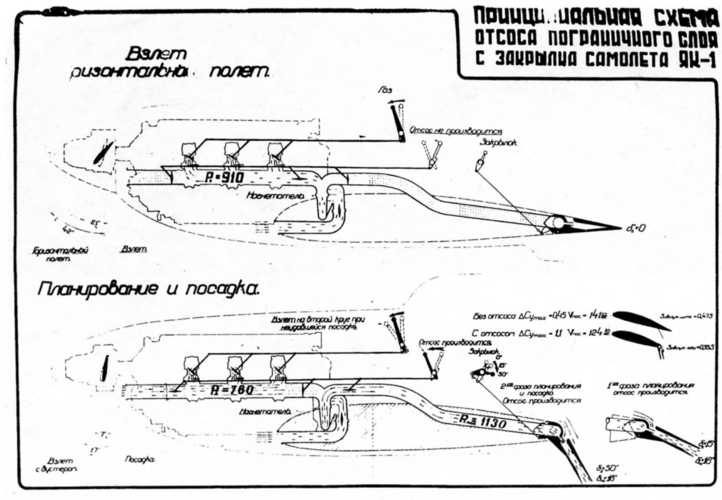
From; "Yak-1; Our best fighter of 1941"
Similar threads
-
-
-
Ambrosini (Sergio Steffanuti) Pre-War Projects and Prototypes
- Started by Maveric
- Replies: 75
-
Book "Yak Sportplanes: Yak-50" by Konstantin Udalov and Aleksej Valjaev-Zajtzev
- Started by athpilot
- Replies: 3
-


